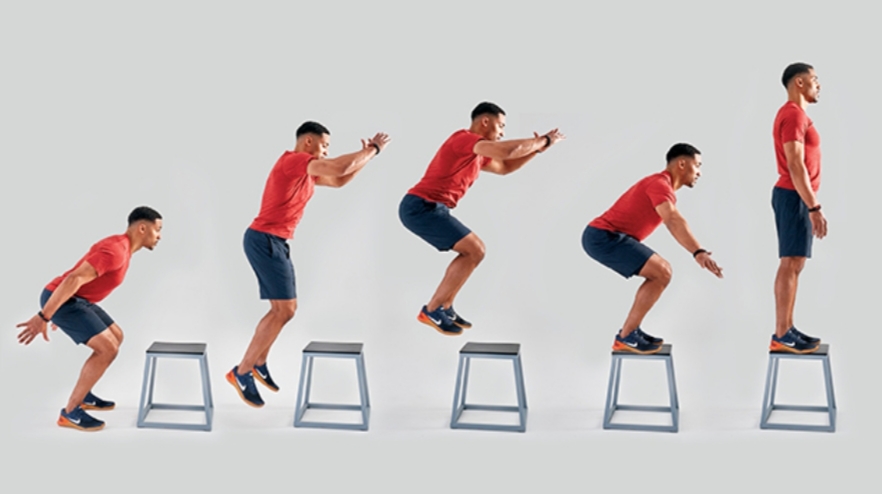
Speed and strength are integral components of fitness found in varying degrees in virtually all athletic movements. Simply put the combination of speed and strength is power. Throughout this century and no doubt long before, jumping, bounding and hopping exercises have been used in various ways to enhance athletic performance. In recent years, this distinct method of training for power or explosiveness has been termed plyometrics.
Plyometrics is based on the understanding that a concentric muscular contraction is much stronger if it immediately follows an eccentric contraction of the same muscle.
Plyometric Phases
A plyometric exercise comprises of three phases:
Eccentric phase, or landing phase, involves the pre-loading (energy is stored) of the agonist muscle group
Amortization phase, or transition phase, is the time between the concentric and eccentric phases. This time needs to be as short as possible otherwise the energy stored during the eccentric phase dissipates, reducing the plyometric effect
Concentric phase, or take-off phase, uses the stored energy to increase the force of the movement
Muscle Mechanism
The maximum force that a muscle can develop is attained during a rapid eccentric contraction. However, it should be realized that muscles seldom perform one type of contraction in isolation during athletic movements. When a concentric contraction occurs (muscle shortens) immediately following an eccentric contraction (muscle lengthens) then the force generated can be dramatically increased.
If a muscle is stretched, much of the energy required to stretch it is lost as heat, but some of this energy can be stored by the elastic components of the muscle. This stored energy is available to the muscle only during a subsequent contraction. It is important to realise that this energy boost is lost if the eccentric contraction is not followed immediately by a concentric contraction. To express this greater force the muscle must contract within the shortest time possible. This whole process is frequently called the stretch shortening cycle and is the underlying mechanism of plyometric training.
Choose the method to fit the sport
The golden rule of any conditioning program is specificity. This means that the movement you perform in training should match, as closely as possible, the movements encountered during competition.